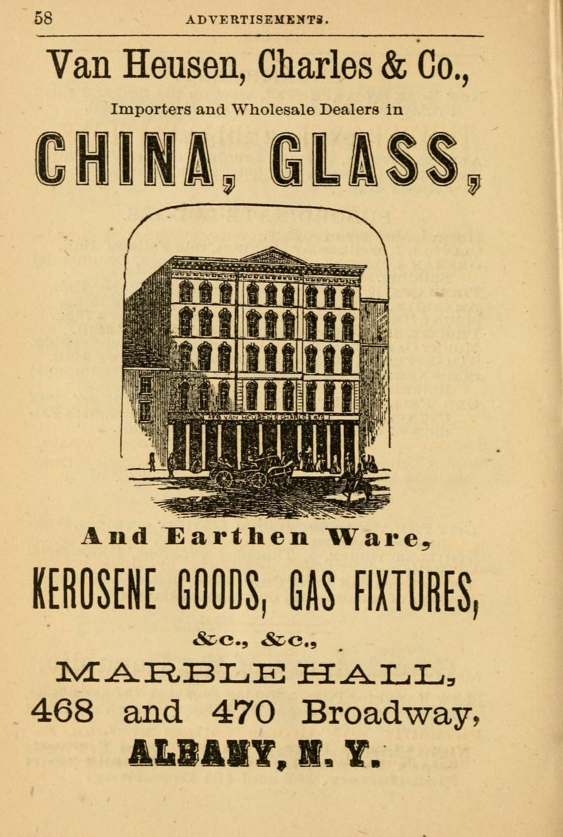
In 1869, Theodore Van Heusen was a dealer in fine china, glass, earthen ware, kerosene goods, gas fixtures and more. His business was in Marble Hall, at 468 and 470 Broadway. He had a bit of loveliness built at 6 Madison Place, just below the cathedral; it was built in 1848 by David Orr.
Marble Hall has not survived, but the Van Heusen family gave us two fine Albany buildings that still stand. The home built for son Charles in 1900 at 411 State Street is now home to the Rockefeller Institute of Government. (The Charles in the business name was the surname of Van Heusen’s partner, Daniel D.T. Charles).
It is said that Charles Van Heusen was friends with Theodore Roosevelt, that he supplied his china to the White House, and that he somehow had a hand in the final version of the Great Seal of the United States. How so? Well, the Philadelphia Museum of Art describes it thusly:
“Edith Kermit Carow Roosevelt (1861-1948) ordered a new state service for 120 to harmonize with the renovation and redecoration of the White House by McKim, Mead and White in 1902. She chose a Wedgwood pattern, then called ‘Ulanda,’ from among several English and Continental porcelain samples submitted by the Van Heusen Charles Company of Albany, New York.1 Wedgwood customized the decoration by adding the Great Seal of the United States in a circular reserve on the border design of simple, radiating gold lines.” Susan Gray Detweiler, from American Presidential China: The Robert L. McNeil, Jr. Collection at the Philadelphia Museum of Art (2008), p. 73.
I guess once it was on a plate, there was no turning back.

Leave a Reply